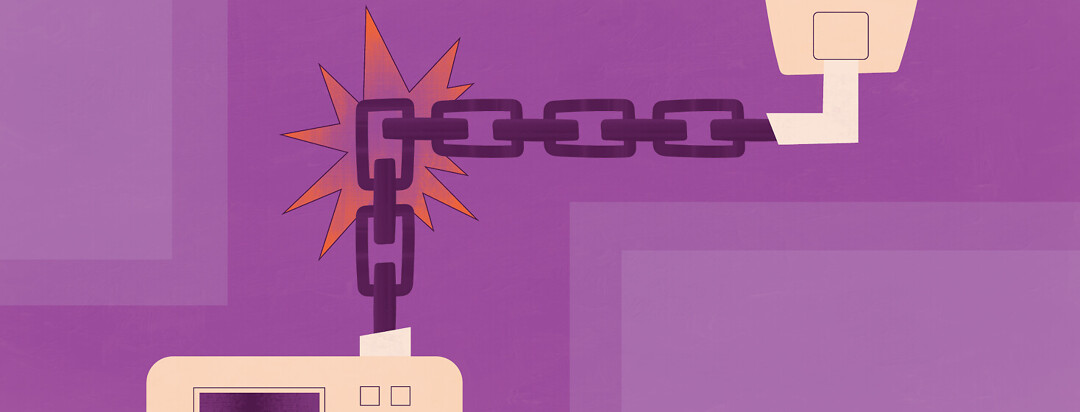The CPAP Hose: Unsung Link to Sleep Apnea Therapy
As a continuous positive airway pressure (CPAP) user, I’m always concerned about my machine’s functionality. It’s an expensive investment in my health. I strive to transport it safely, use its settings as recommended, and keep it clean.
My mask is also critical to therapy. Without the cushion and headgear I wear every night, I wouldn't be getting therapy for my obstructive sleep apnea (OSA).
But how many among us PAP users consider the value of the hose?
Trust me...you will the moment yours gets a hole in it.
Behold the PAP hose
It’s such an obvious part of our treatment for OSA, it’s easy to forget about the tubing that delivers our prescription.
Most PAP machines come with an unheated hose. If we’re lucky, we qualify for a heated hose upgrade or can pay for one ourselves. Regardless, it’s important to remember one simple fact: hoses can be punctured. When this happens, therapy won’t work.
How might a PAP hose be punctured?
I’m only guessing here, but I suspect that hoses — if left to dangle anywhere within reach of a furry friend — face the highest risk for becoming play toys. Sharp little feline or canine teeth can puncture even the most robust hoses.
Small children, too, can damage a PAP hose if left to their own devices. Not because they might bite into one (although they might!) but because they might use it as a toy, a jump rope, or a water slide for their Polly Pockets.
We may also unintentionally puncture our tubing. For instance, we:
- Drape tubing over a lift or post, causing friction that results in weak spots that eventually tear.
- Clean our tubing too aggressively, especially when using a brush designated for this purpose.
- Swing the tubing around while it's full of soapy water to force a lather, possibly weakening the hose where it meets the connectors at the ends.
- Have sharp fingernails that puncture the tubing where we grab it.
- Pull on the hose too hard, creating weak spots at the connections.
- Carelessly pack it for travel. If it’s bundled too tightly, pressure on bends in the hose can cause breaks.
How to prevent CPAP leaks
- Keep the tubing out of reach of pets and children. Tuck it gently into a hard-to-reach space or close your bedroom door to unsupervised visitors.
- If you use a lift, or drape the hose over a piece of furniture, try to avoid sharp edges and don’t hang the hose at the same bend.
- Be gentle about adjusting it during sleep.
- Wrap yours in a fabric cover. Insulated covers improve the performance of unheated tubing by preventing rainout. If you place a fabric cover on a heated hose, adjust humidity settings to ensure you don’t invite unnecessary condensation.
- Be gentle while cleaning your tubing, using only gentle detergent and warm water. Don’t swing your tubing around – just raise it higher at each end, back and forth, then pour out the soapy water, then rinse. Protect the ends at the hose’s most notorious weak points: where the tubing meets the connectors.
- If you use a wire brush to clean tubing, be gentle when inserting and removing it. Its stiff end can still create a hole if you aren’t careful.
- Keep your nails trimmed. Or wrap your tubing in a fabric cover to create a barrier.
- Pack your tubing thoughtfully for travel. Use a padded PAP bag, which designates a roomy spot for the hose.
- Every time you deep clean your machine, test your hose for leaks. Simply run the machine with the hose attached, blocking the end that attaches to your mask with the palm of your hand. If you can hear or feel a leak, then you need to replace your tubing.
Can you fix a hole in PAP tubing?
Maybe. Maybe not.
Online videos and forums provide how-to instructions for patching or reconstructing hoses. There’s no guarantee these work. Personally, I wouldn't recommend it. Be especially wary of advice for repairs that use adhesives. A glue designated as “food grade” may still produce fumes that are unsafe for you to breathe.
Also, if you follow do-it-yourself fixes for unheated hoses on your heated hose, you risk damaging or dismantling critical circuits inside the connectors by mistake.
Consider replacing instead of fixing
The better option, even if it costs a little money? Replace your hose.Tubing is only meant to last 6 months, and insurance typically covers replacements.
Contact your doctor for a quick fix while you wait for your replacement. They might even loan you some tubing until then. Or consider keeping your basic unheated hose on hand just in case your heated hose springs a leak between replacements.

Join the conversation